Step into a world where ancient traditions meet modern exploration through Indigenous tourism – a transformative way to experience Ontario’s rich cultural heritage firsthand. From participating in traditional ceremonies led by Knowledge Keepers to learning ancestral crafting techniques passed down through generations, Indigenous tourism offers authentic connections that go far beyond typical tourist experiences.
Indigenous-led adventures across Ontario’s vast landscapes provide travelers with unique opportunities to understand the deep relationship between First Nations peoples and the land they’ve stewarded for millennia. Whether you’re paddling traditional waterways in handcrafted canoes, learning about medicinal plants on guided forest walks, or sharing stories around a sacred fire, these experiences offer profound insights into Indigenous worldviews and ways of living.
What sets Indigenous tourism apart is its commitment to cultural preservation and sustainable practices. Every adventure supports Indigenous communities directly, helping to maintain traditional knowledge while creating economic opportunities for future generations. By choosing Indigenous-led experiences, travelers become part of a larger movement toward cultural understanding, reconciliation, and responsible tourism that respects both the land and its original caretakers.
This guide will help you discover authentic, respectful ways to engage with Indigenous cultures while ensuring your tourism choices make a positive impact on the communities you visit.
Understanding Indigenous Tourism in Ontario
What Makes Indigenous Tourism Unique
Indigenous tourism offers a profound connection to the land that goes far beyond typical sightseeing experiences. For Indigenous peoples, the relationship with the land is deeply spiritual and rooted in centuries of traditional knowledge. When you participate in Indigenous tourism experiences, you’re not just observing – you’re being invited to understand a worldview where natural heritage preservation is woven into daily life.
What makes these experiences truly special is the emphasis on storytelling and knowledge sharing. Indigenous guides don’t just point out landmarks; they share oral histories passed down through generations, teaching visitors about sustainable harvesting practices, medicinal plants, and the interconnectedness of all living things. You might learn how to identify edible plants, hear stories about the land’s significance, or participate in traditional ceremonies.
This approach to tourism prioritizes respect, reciprocity, and responsibility. Rather than treating nature as a backdrop for activities, Indigenous tourism experiences encourage visitors to become stewards of the land themselves, fostering a deeper appreciation for both the cultural and natural elements of the places they visit.
Benefits to Indigenous Communities
Indigenous tourism creates meaningful opportunities for communities to share their culture on their own terms while building sustainable economic foundations. When you participate in authentic Indigenous experiences, your tourism dollars directly support local businesses, create jobs, and help fund cultural programs that preserve traditional knowledge for future generations.
Many Indigenous tourism businesses reinvest their profits into community initiatives like language preservation, traditional skills workshops, and youth mentorship programs. This economic model allows communities to maintain their cultural practices while adapting to modern realities in ways that honor their heritage and values.
Beyond the financial benefits, Indigenous tourism helps foster cross-cultural understanding and breaks down stereotypes through genuine interactions. When visitors learn about Indigenous perspectives, traditional ecological knowledge, and sustainable land stewardship directly from community members, it creates lasting positive impacts for both hosts and guests.
For Indigenous youth especially, tourism enterprises provide opportunities to stay connected to their culture while developing valuable business and leadership skills in their home communities. This combination of cultural preservation and economic development helps ensure Indigenous traditions continue to thrive for generations to come.
Authentic Indigenous Experiences in Ontario
Cultural Centers and Museums
Indigenous cultural centers across Ontario offer immersive experiences that bring thousands of years of history and tradition to life. The Woodland Cultural Centre in Brantford stands as a powerful testament to Indigenous resilience, offering thought-provoking exhibits and educational programs that explore the legacy of residential schools while celebrating vibrant Indigenous arts and culture.
At the Museum of Ontario Archaeology in London, visitors can explore reconstructed longhouses and participate in hands-on workshops learning traditional crafts like beadwork and pottery. The friendly knowledge keepers share stories that have been passed down through generations, making history tangible and meaningful for all ages.
Insider tip: Many cultural centers offer seasonal programming, so call ahead to catch special events like sunrise ceremonies or harvest celebrations. The best experiences often come from joining guided tours, where Indigenous interpreters share personal insights and family stories that you won’t find in history books.
For a deeper understanding of contemporary Indigenous life, visit the Thunder Bay Art Gallery, which showcases works by emerging and established Indigenous artists. The gallery’s peaceful setting along Lake Superior provides the perfect backdrop for reflecting on the powerful messages conveyed through various art forms.
Remember to approach these spaces with respect and an open mind. Many centers welcome photography in designated areas, but always ask permission first – it’s a simple way to show cultural sensitivity while creating lasting memories of your visit.
Guided Nature Experiences
Step into the world of traditional Indigenous knowledge with guided nature experiences that connect you deeply to Ontario’s landscapes. Indigenous guides share centuries of wisdom passed down through generations, offering unique perspectives on local flora, fauna, and the delicate balance of ecosystems.
Join experienced Indigenous interpreters on medicine walks to discover the healing properties of native plants and learn about traditional harvesting practices. These intimate experiences often include stories about the spiritual significance of various plants and their roles in Indigenous ceremonies and daily life.
Visitors can participate in eco-friendly outdoor activities like tracking workshops, where guides teach traditional methods of reading animal signs and understanding wildlife behavior. Many communities offer seasonal experiences, from spring maple syrup harvesting to fall wild rice gathering, allowing guests to participate in time-honored traditions.
Interpretive trails, designed and led by Indigenous knowledge keepers, feature stops at significant cultural sites and natural landmarks. These paths often include interactive elements where visitors learn about traditional navigation methods, weather reading, and sustainable harvesting practices that have helped Indigenous peoples thrive for millennia.
For the best experience, book tours in advance and come prepared to listen, learn, and participate respectfully. Wear appropriate outdoor clothing and comfortable walking shoes, and remember that these experiences are about more than just hiking – they’re about understanding the deep connection between land and culture that defines Indigenous ways of life.
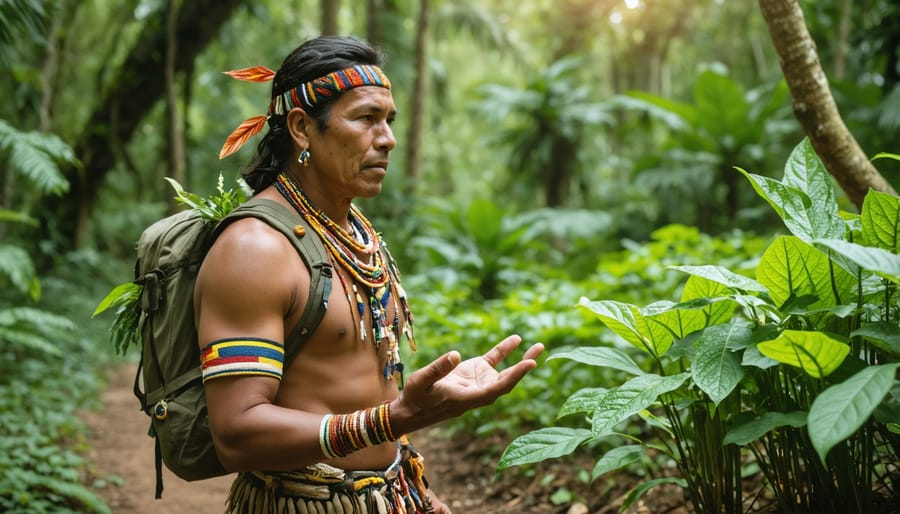
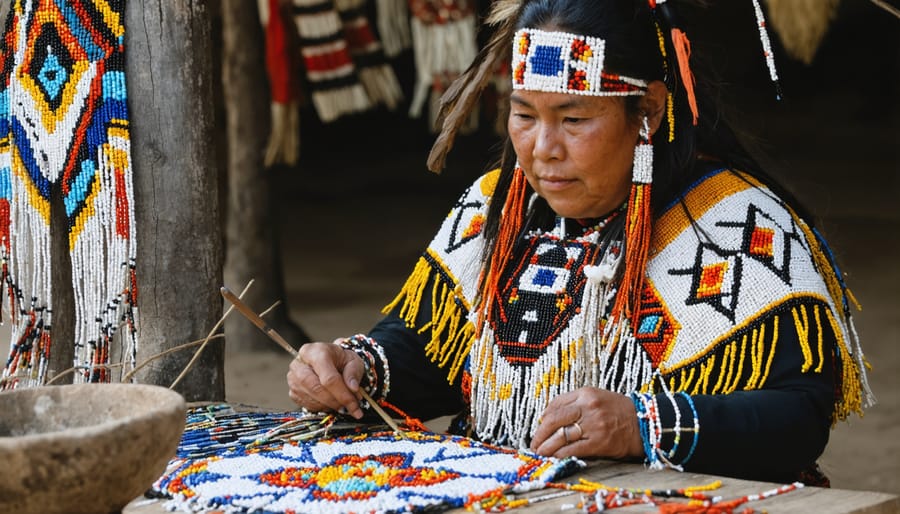
Arts and Crafts Workshops
Step into the world of Indigenous artistry through hands-on workshops led by skilled craftspeople who share generations of knowledge and tradition. From beadwork to basket weaving, these interactive experiences offer more than just a creative outlet – they’re a window into Indigenous culture and heritage.
Watch and learn as expert artisans demonstrate traditional techniques passed down through the ages. You might find yourself crafting delicate dreamcatchers with carefully selected materials, each element holding special significance. Or perhaps you’ll try your hand at making medicine pouches, learning about the sacred herbs and teachings associated with them.
Many communities offer seasonal workshops that align with traditional harvesting times. In spring, you can learn birch bark crafting when the bark is perfect for peeling. Summer brings opportunities for making traditional drums, while autumn is ideal for working with leather and creating moccasins.
These workshops are more than craft sessions – they’re storytelling experiences. As you work with natural materials, your Indigenous instructor will share the cultural significance behind each creation, the traditional protocols observed, and often personal stories that connect past to present.
Insider tip: Book workshops in advance, as many fill up quickly, especially during peak tourism seasons. Most workshops welcome beginners and provide all necessary materials, though it’s worth checking if you need to bring anything specific. Remember to approach these learning experiences with respect and an open mind – you’re not just making art, you’re participating in living cultural traditions.
Responsible Tourism Practices
Cultural Etiquette
When participating in Indigenous tourism experiences, showing respect for cultural traditions and protocols is essential. Always remember you’re a guest in these communities, and approach each interaction with an open mind and humble attitude.
Before visiting, research the specific Nation or community you’ll be experiencing. Different Indigenous communities have distinct customs, traditions, and protocols. Listen carefully to your Indigenous guides and hosts, and follow their lead on appropriate behavior.
Photography is often a sensitive topic. Always ask permission before taking photos of people, ceremonies, or sacred sites. Some events or locations may prohibit photography entirely. When in doubt, simply ask.
Dress modestly and appropriately, especially when attending ceremonies or visiting cultural sites. If you’re invited to participate in a ceremony, follow the instructions given and avoid touching sacred items unless specifically invited to do so.
Remember that sharing stories and teachings is a privilege, not a right. Avoid recording or writing down sacred teachings unless given explicit permission. Show appreciation by actively listening and engaging respectfully with questions when appropriate.
When purchasing Indigenous art or crafts, buy directly from Indigenous artisans or authorized sellers. This ensures fair compensation and helps preserve authentic cultural practices.
Most importantly, approach each experience with genuine curiosity and respect. Indigenous tourism is about creating meaningful connections and understanding, not just checking items off a tourist checklist.
Supporting Indigenous Businesses
Supporting Indigenous tourism businesses goes beyond just visiting cultural sites – it’s about ensuring your travel spending directly benefits Indigenous communities. Look for businesses and experiences that are Indigenous-owned and operated, rather than those that simply feature Indigenous themes or artwork. Many communities have developed their own sustainable tourism initiatives that protect both their cultural heritage and natural environments.
When booking accommodations or tours, check if they’re certified by Indigenous Tourism Ontario (ITO) or the Indigenous Tourism Association of Canada (ITAC). These organizations ensure businesses meet authentic Indigenous tourism standards and operate ethically. Consider staying at Indigenous-owned lodges or hotels, joining guided experiences led by Indigenous knowledge keepers, and purchasing authentic crafts directly from Indigenous artisans.
Remember that timing matters too. Many communities host seasonal festivals and gatherings that provide unique opportunities to experience their culture while ensuring maximum economic benefit stays within the community. Plan your visit around these events when possible.
Make conscious choices about where you spend your money. Choose restaurants serving traditional Indigenous cuisine, book tours with Indigenous guides, and shop at Indigenous-owned gift shops. These direct purchases help support Indigenous entrepreneurs and create employment opportunities within their communities.
Planning Your Visit
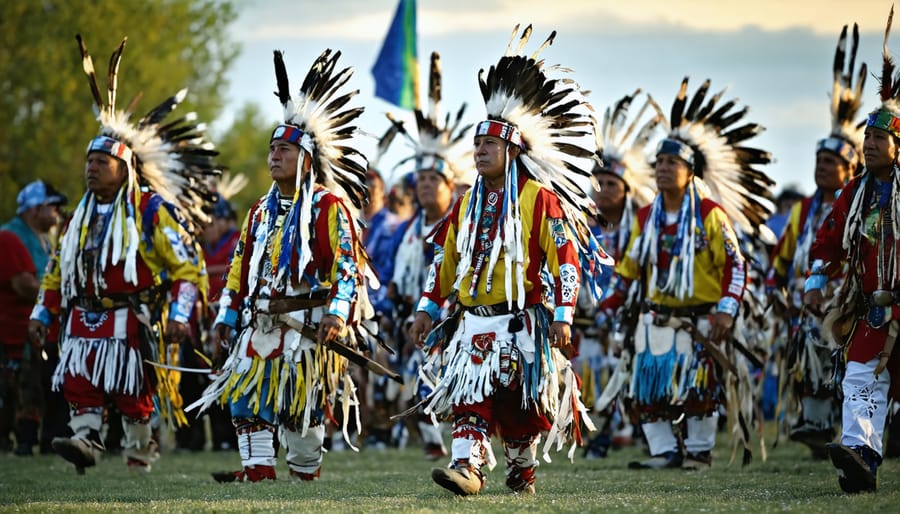
Best Times to Visit
Indigenous tourism experiences in Ontario offer unique opportunities throughout the year, each season bringing its own special charm and cultural significance. Summer (June to August) is peak season, when most communities host their largest powwows and cultural festivals. The warmer weather also creates perfect conditions for traditional outdoor experiences in Ontario, like guided medicine walks and canoe expeditions.
Fall (September to October) brings spectacular colors to the landscape and is ideal for harvest-themed activities and workshops. Many Indigenous communities celebrate their fall harvest festivals during this time, offering visitors the chance to learn about traditional food gathering and preparation methods.
Winter (December to March) presents opportunities for unique cultural experiences like traditional snowshoeing, ice fishing, and storytelling gatherings. These colder months are when many Indigenous communities share their oral histories around the fire, making it a particularly meaningful time to visit.
Spring (April to May) is perfect for maple syrup harvesting demonstrations and early-season wildlife viewing. However, be mindful that some areas may experience “shoulder season” conditions with muddy trails and variable weather.
Pro tip: Always check specific dates for cultural festivals and powwows, as they follow traditional calendars rather than fixed dates. It’s recommended to book accommodations several months in advance for major events, especially during summer powwow season.
Booking and Preparation
Booking an Indigenous tourism experience requires thoughtful planning and consideration. Start by researching authorized Indigenous tourism operators through the Indigenous Tourism Ontario website or local tourism boards. Many experiences should be booked at least a few weeks in advance, especially during peak summer months.
When reaching out to Indigenous tourism providers, be prepared to share your group size, any accessibility requirements, and specific interests. Some experiences, like traditional ceremonies or medicine walks, may have limited availability or specific seasonal timing.
Before your visit, familiarize yourself with basic cultural protocols. Many Indigenous communities appreciate visitors who show interest in learning about their customs. Wear weather-appropriate, comfortable clothing and closed-toe shoes for outdoor activities. Photography policies vary by community and activity – always ask permission before taking pictures.
Pack an open mind and a respectful attitude. Your hosts may share personal stories, traditional knowledge, and sacred teachings. Listen attentively and feel free to ask thoughtful questions when appropriate.
Some experiences may include traditional foods, crafting materials, or ceremonial items. If you have any allergies or dietary restrictions, inform your hosts beforehand. Many operators provide all necessary equipment, but confirm what you need to bring.
Consider purchasing authentic Indigenous crafts or artwork during your visit – these make meaningful souvenirs while supporting local artisans. Remember to bring cash, as some remote locations may have limited card payment options.
Indigenous tourism offers more than just a travel experience – it’s a powerful bridge between cultures that transforms both visitors and communities. By choosing to engage with Indigenous tourism experiences, you’re not just creating lasting memories; you’re participating in a sustainable form of travel that preserves and celebrates living traditions. These authentic encounters help sustain Indigenous communities economically while fostering deeper cross-cultural understanding and respect. As more travelers seek meaningful connections and sustainable ways to explore, Indigenous tourism stands as a shining example of how travel can be both enriching and responsible. Whether it’s learning traditional crafts, participating in guided nature walks, or sharing stories around a sacred fire, these experiences remind us that the heart of true sustainable tourism lies in genuine human connections and mutual respect for the land we share.

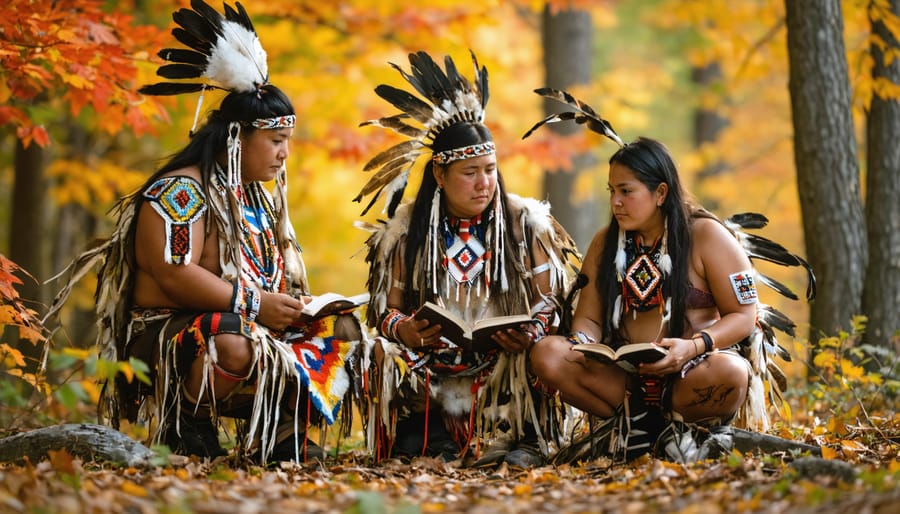

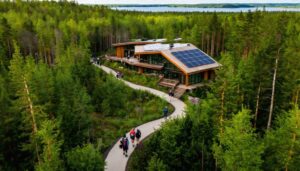





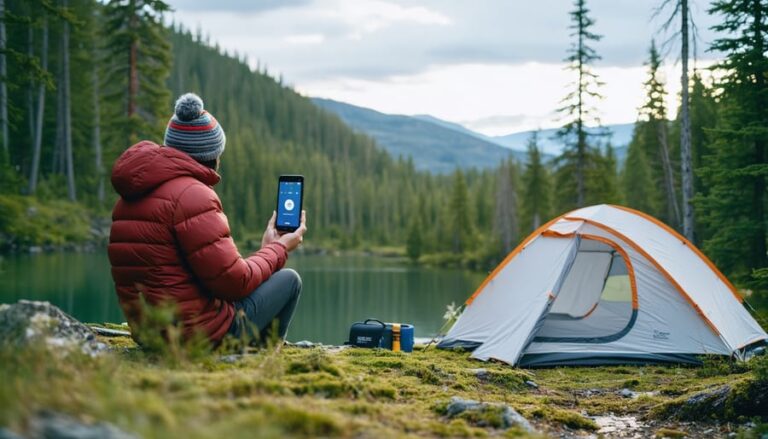
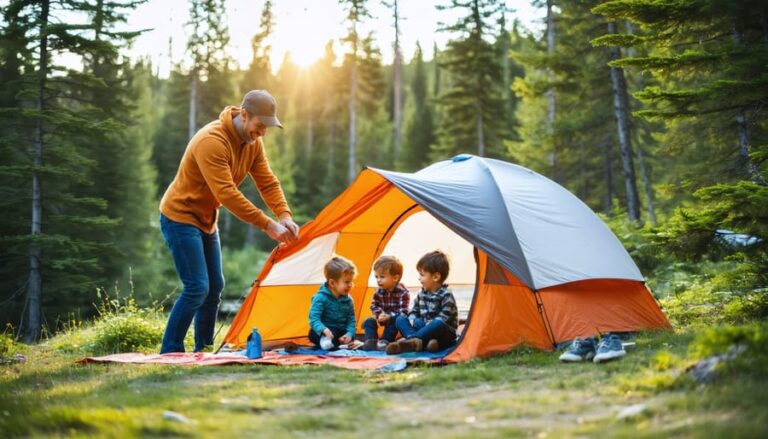
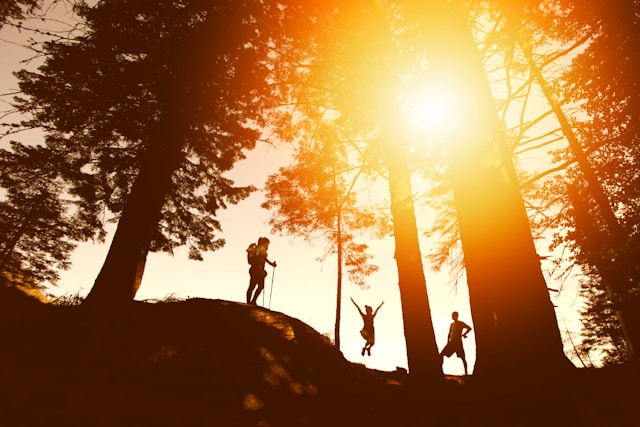
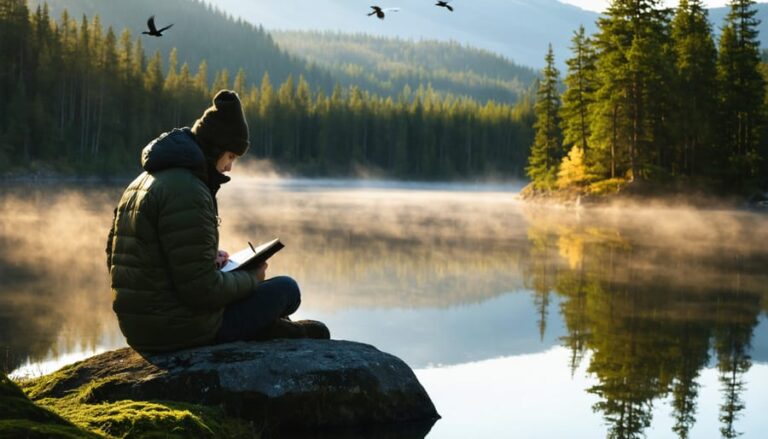
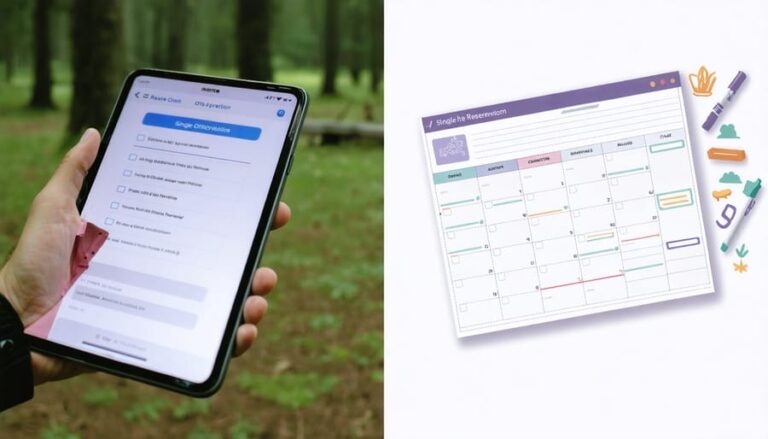
+ There are no comments
Add yours